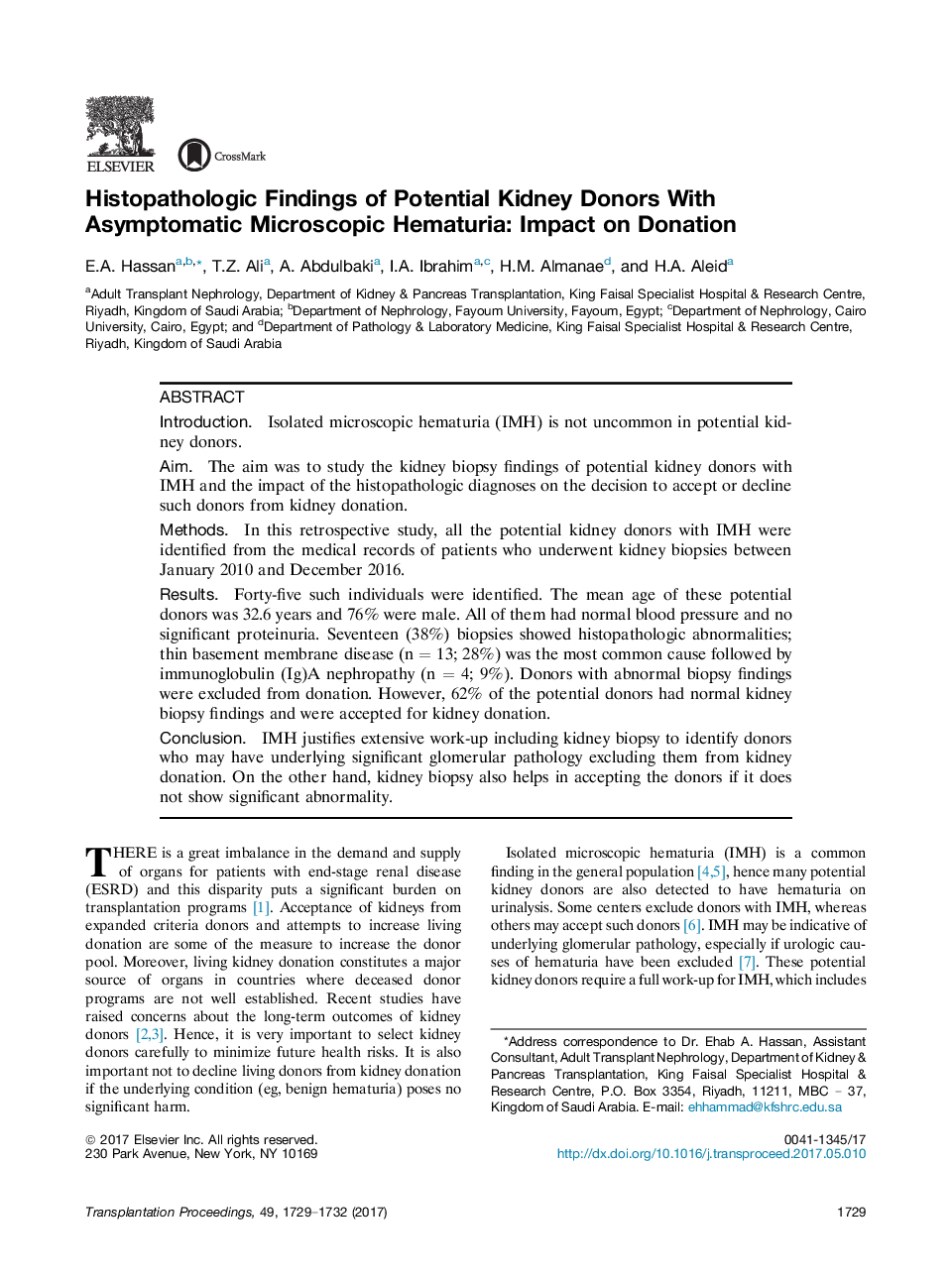| Article ID | Journal | Published Year | Pages | File Type |
|---|---|---|---|---|
| 5728621 | Transplantation Proceedings | 2017 | 4 Pages |
â¢Thin basement membrane disease and IgAN are glomerular lesions that can be identified in donors with IMH.â¢Kidney biopsy is important in identifying donors with IMH with normal biopsy findings to accept them for donation.
IntroductionIsolated microscopic hematuria (IMH) is not uncommon in potential kidney donors.AimThe aim was to study the kidney biopsy findings of potential kidney donors with IMH and the impact of the histopathologic diagnoses on the decision to accept or decline such donors from kidney donation.MethodsIn this retrospective study, all the potential kidney donors with IMH were identified from the medical records of patients who underwent kidney biopsies between January 2010 and December 2016.ResultsForty-five such individuals were identified. The mean age of these potential donors was 32.6 years and 76% were male. All of them had normal blood pressure and no significant proteinuria. Seventeen (38%) biopsies showed histopathologic abnormalities; thin basement membrane disease (n = 13; 28%) was the most common cause followed by immunoglobulin (Ig)A nephropathy (n = 4; 9%). Donors with abnormal biopsy findings were excluded from donation. However, 62% of the potential donors had normal kidney biopsy findings and were accepted for kidney donation.ConclusionIMH justifies extensive work-up including kidney biopsy to identify donors who may have underlying significant glomerular pathology excluding them from kidney donation. On the other hand, kidney biopsy also helps in accepting the donors if it does not show significant abnormality.
